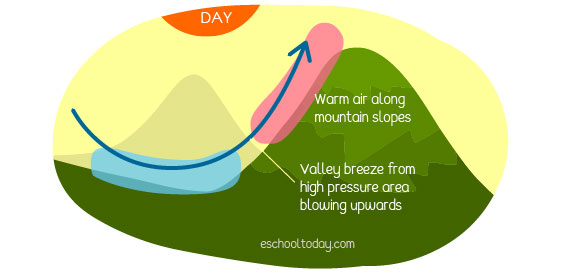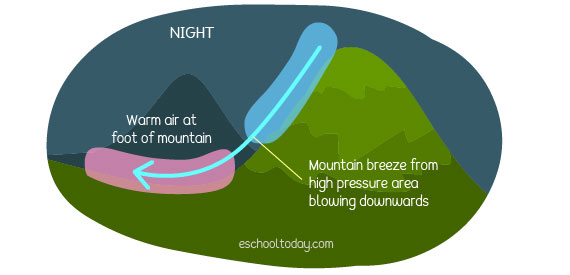- Winds
Mountain and Valley Breezes
In a similar behavior as land and sea breezes, mountains (hilly) and surrounding valleys also have breezes called Mountain and Valley Breezes.

During the day, air over the mountain slope heats up more than the air at the foot of the mountain. The warm air over the slopes reduces in density. Low pressure is created at the top of the mountain, and high pressure from the cooler air below forces a cool breeze to move upward. This condition generates a breeze which we call Valley breeze, and it is common during warmer months when there is a lot of heating from the sun.

At night, it is a lot cooler as the sun goes to sleep. So the air at the upper slope of the mountain cools off very quickly and becomes dense. High pressure is created. At this time, the air at the valley floor is a lot warmer (low pressure) and forced to give way to colder air moving down the slope towards the valley floor. That is called mountain breeze, and it is a lot more common in the colder months when there is less warming from the sun.
